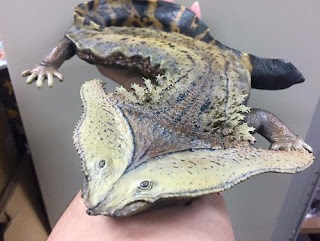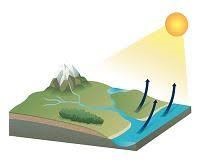metamorphic rocks
metamorphic rocks
definition of metamorphic rocks:
A rock is a hard stone, of great solidity, which is composed of one or more minerals. Metamorphic, on the other hand, is what was subjected to a process of metamorphism A rock, when these conditions are modified, loses its thermodynamic equilibrium. In this way, it will seek to take advantage of the energy to carry out an evolution that allows it to recover its equilibrium in the new conditions. The rock resulting from this process will receive the qualification of metamorphic rock. Below are some of the main metamorphic rocks: Metamorphic rock * Espilita: belongs to the basaltic (volcanic igneous rocks with a rich content of iron and magnesium silicates, and with little silica), specifically those altered by fluids at high temperatures. It usually has a green or gray color and has no visible crystals, although this may vary. Commonly, the spilite is in the form of a cushioned lava, which forms under the water when the lava goes to the bottom of the sea and solidifies with a similar appearance to a cushion; * Amphibolite: its composition is based mainly on amphibole minerals (a group belonging to silicates that occurs in a wide range of varieties, with different appearances and compositions). This type of metamorphic rock is the oldest of all those that have been found, since it is estimated that they can reach 4,300 million years. With respect to its texture, it is usually rough; * Anthracite: it is the most metamorphic of the known mineral carbons, as well as the one that contains the most carbon. It exhibits a brilliant luster and nuances ranging from steel gray to black. If it is not wet and if the ashes are not taken into account, the anthracite has in its mass approximately 14% of volatile organic compounds (chemical substances with carbon, present in any living element) and 86% of carbon. Said percentages may vary, decreasing the first and increasing the second; * Corneana: the name of this metamorphic rock is due to its name in German, hornfels, which can be translated as "rock shaped like a horn". It is a rock of great hardness, able to withstand the glacial action. It originates from the high temperatures of the intrusive igneous masses. In general, its grain is fine and presents an aspect that mixes shades of dark brown and black parts; * Quartzite: also known as metacuarcita. It is rich in quartz (usually containing more than 90% of its structure) and of considerable hardness.
images

videos
https://youtu.be/9mF0b8PPpsc
definition of metamorphic rocks:
A rock is a hard stone, of great solidity, which is composed of one or more minerals. Metamorphic, on the other hand, is what was subjected to a process of metamorphism A rock, when these conditions are modified, loses its thermodynamic equilibrium. In this way, it will seek to take advantage of the energy to carry out an evolution that allows it to recover its equilibrium in the new conditions. The rock resulting from this process will receive the qualification of metamorphic rock. Below are some of the main metamorphic rocks: Metamorphic rock * Espilita: belongs to the basaltic (volcanic igneous rocks with a rich content of iron and magnesium silicates, and with little silica), specifically those altered by fluids at high temperatures. It usually has a green or gray color and has no visible crystals, although this may vary. Commonly, the spilite is in the form of a cushioned lava, which forms under the water when the lava goes to the bottom of the sea and solidifies with a similar appearance to a cushion; * Amphibolite: its composition is based mainly on amphibole minerals (a group belonging to silicates that occurs in a wide range of varieties, with different appearances and compositions). This type of metamorphic rock is the oldest of all those that have been found, since it is estimated that they can reach 4,300 million years. With respect to its texture, it is usually rough; * Anthracite: it is the most metamorphic of the known mineral carbons, as well as the one that contains the most carbon. It exhibits a brilliant luster and nuances ranging from steel gray to black. If it is not wet and if the ashes are not taken into account, the anthracite has in its mass approximately 14% of volatile organic compounds (chemical substances with carbon, present in any living element) and 86% of carbon. Said percentages may vary, decreasing the first and increasing the second; * Corneana: the name of this metamorphic rock is due to its name in German, hornfels, which can be translated as "rock shaped like a horn". It is a rock of great hardness, able to withstand the glacial action. It originates from the high temperatures of the intrusive igneous masses. In general, its grain is fine and presents an aspect that mixes shades of dark brown and black parts; * Quartzite: also known as metacuarcita. It is rich in quartz (usually containing more than 90% of its structure) and of considerable hardness.
images

videos
https://youtu.be/9mF0b8PPpsc


Comentarios
Publicar un comentario